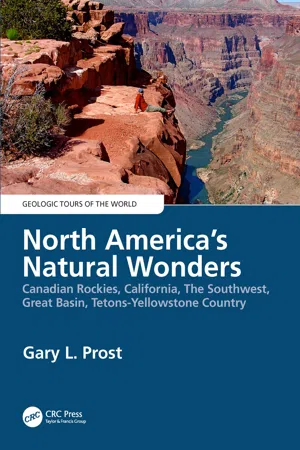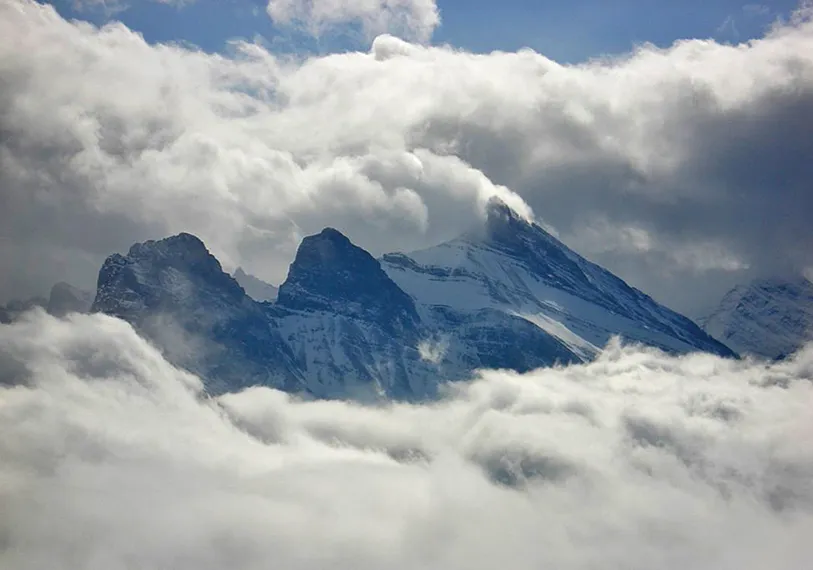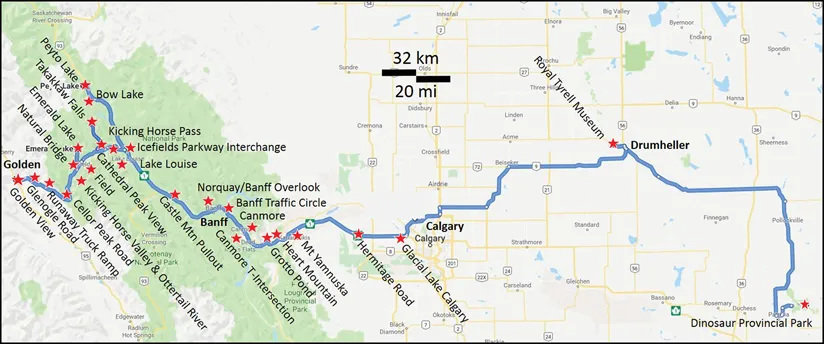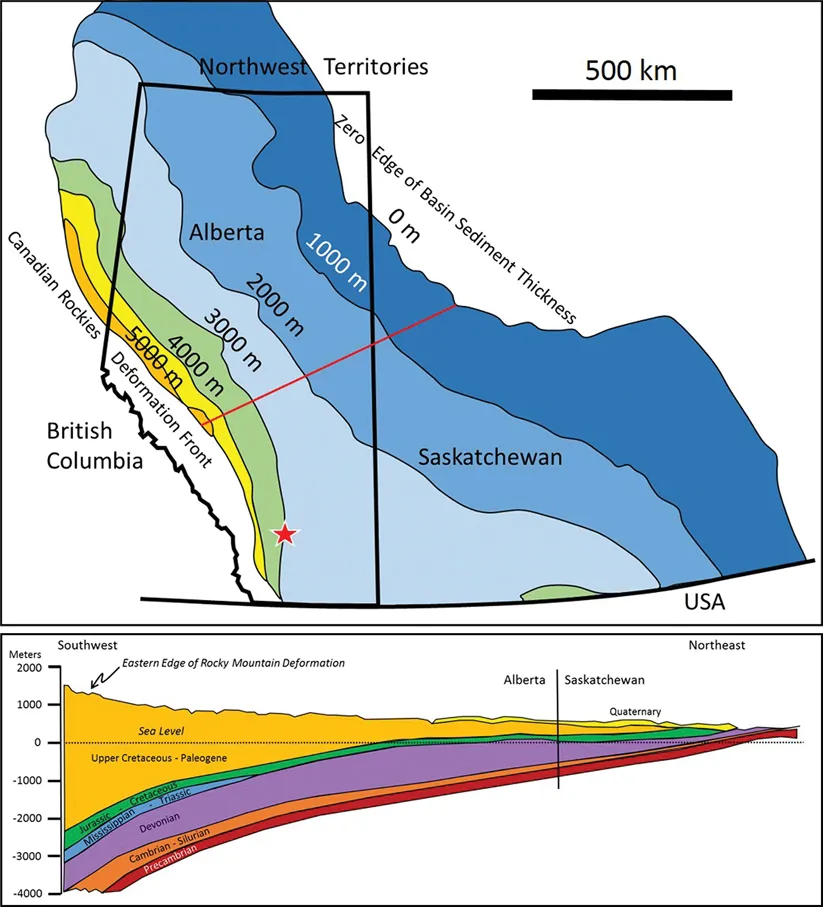
North America's Natural Wonders
Canadian Rockies, California, The Southwest, Great Basin, Tetons-Yellowstone Country
- 411 pages
- English
- ePUB (mobile friendly)
- Available on iOS & Android
North America's Natural Wonders
Canadian Rockies, California, The Southwest, Great Basin, Tetons-Yellowstone Country
About This Book
Written by a career geologist with decades of experience in the field, North America's Natural Wonders provides everything the reader needs to understand the landscape. It guides readers through the most iconic, geologically significant scenery in North America, points out features of interest, explains what they are seeing, and describes how these features came to be.
Presented as classic excursions to some of the best-known natural wonders on the continent, Volume I focuses primarily on Western North America, including the Canadian Rockies, California, the Southwest, Great Basin, and Tetons-Yellowstone Country. The trips detailed in this volume include stops at quintessential features, such as the glaciers and mountains of Banff National Park, Yosemite, the vineyards of Napa Valley, the California goldfields, the Grand Canyon, numerous parks in Utah, the geysers and hot springs of Yellowstone National Park, as well as many others. It also features discussions of lesser-known but equally interesting geologic formations and important information on accessing these sites.
Features
-
- Addresses issues of interest, such as fossils, earthquakes, mineral sites, mining, and oil fields
-
- Lavishly illustrated with numerous colorful maps and breathtaking geological landscapes and their various features
These five self-guided tours explain to the curious layman, student, and geologist what they are seeing when they look at a roadcut or a quarry and enhances the experience far beyond simple sightseeing.
Frequently asked questions
Information
1 Canadian Rockies Transect
Dinosaur Provincial Park, Alberta, to the Rocky Mountain Trench at Golden, British Columbia

Overview

Itinerary
- Stop 1 Dinosaur Provincial Park
- Stop 2 Royal Tyrrell Museum, Drumheller
- Stop 3 Glacial Lake Calgary
- Stop 4 Hermitage Road—Foothills Deformation
- Stop 5 McConnell Thrust at Mt. Yamnuska (Exit 118)
- Stop 6 Heart Mountain
- Stop 7 Grotto Pond and Mount McGillivray
- Stop 8 Canmore City Center—Rundle Thrust, Mt. Allan Syncline (Exit 89)
- Stop 9 Canmore T-intersection—Rundle Sub-thrust Deformation
- Stop 10 Banff “Traffic Circle”—Fernie—Kootenay Transition and Sub-thrust Deformation
- Stop 11 Norquay Overlook
- Stop 12 Castle Mountain Thrust and Main Ranges
- Stop 13 Lake Louise and Glaciation in the Canadian Rockies
- Stop 14 Trans-Canada Highway—Icefields Parkway Interchange
- Side Trip 1 Icefields Parkway
- ST1.1 Peyto Lake
- ST1.2 Bow Lake and Crowfoot Glacier
- Stop 15 Kicking Horse Pass
- Stop 16 Cathedral Peak Overlook
- Side Trip 2 Takakkaw Falls and Yoho Glacier
- Stop 17 Field Visitor Centre, the Burgess Shale, and the Kicking Horse Rim
- Side Trip 3 Emerald Lake and Natural Bridge
- ST3.1 Emerald Lake
- ST3.2 Natural Bridge
- Stop 18 Ottertail River and the Split Creek Synclinorium
- Stop 19 Kicking Horse Valley Pullout and Ice River Complex
- Stop 20 Cellor Peak Road and the Porcupine Creek Anticlinorium
- Stop 21 Runaway Truck Ramp—Deformation in Cambro-Ordovician McKay Group
- Stop 22 Glenogle Creek Road and the Beaverfoot Synclinorium
- Stop 23 Golden View Road and the Rocky Mountain Trench.
Western Canada Sedimentary Basin

Canadian Rocky Mountains
Table of contents
- Cover
- Half Title
- Series Title
- Title Page
- Copyright Page
- Dedication Page
- Table of Contents
- Preface
- Author
- Chapter 1 Canadian Rockies Transect: Dinosaur Provincial Park, Alberta, to the Rocky Mountain Trench at Golden, British Columbia
- Chapter 2 Continental Margin Transect: Marin Headlands to Devils Postpile, California
- Chapter 3 Basin-and-Range and Colorado Plateau: Owens Valley, California, to Grand Junction, Colorado
- Chapter 4 Basin-and-Range: Reno, Nevada to Salt Lake City, Utah
- Chapter 5 Snake River Volcanics to the Grand Tetons and Yellowstone Hotspot: Twin Falls, Idaho to Cody, Wyoming
- Index